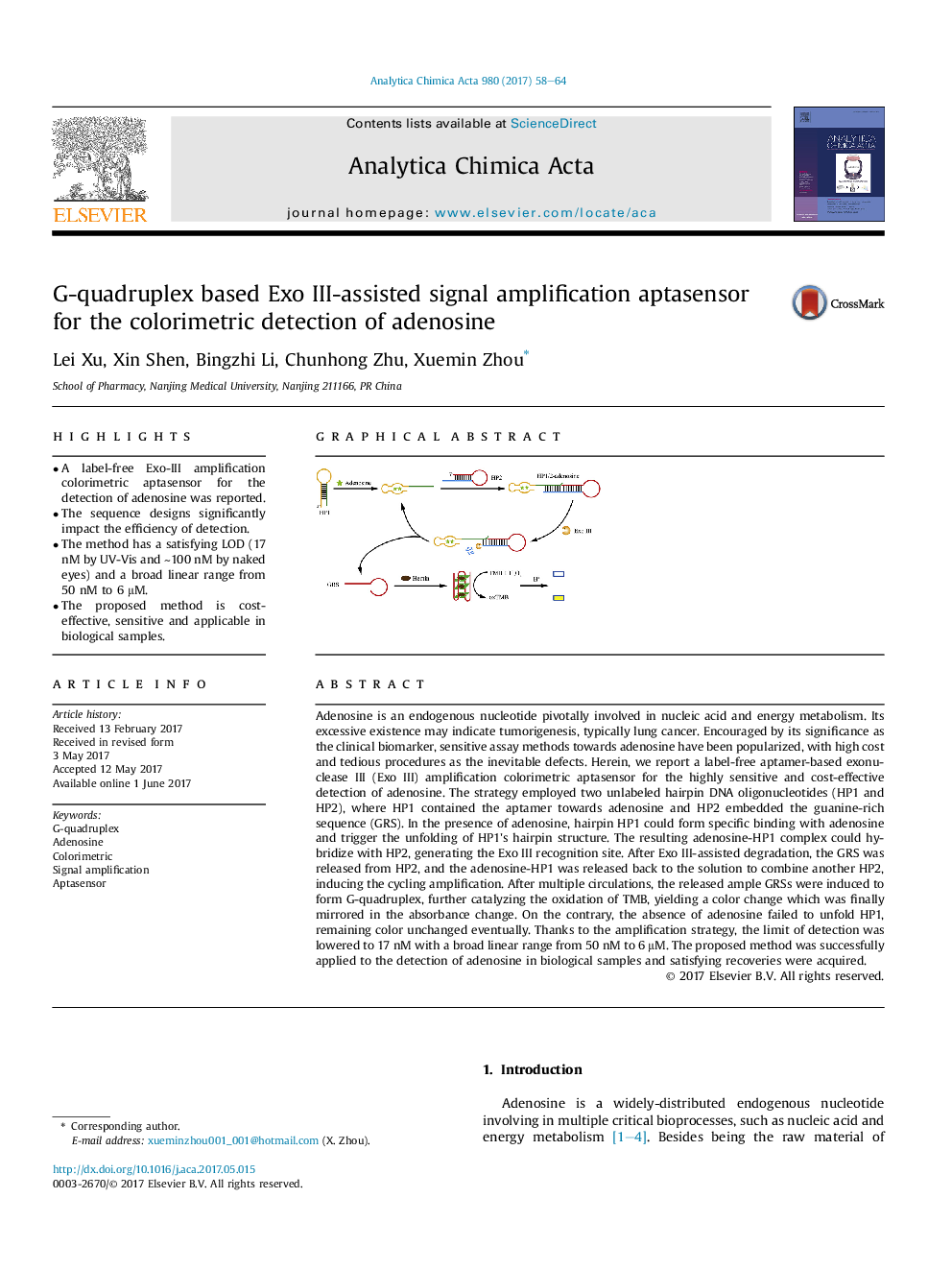| کد مقاله | کد نشریه | سال انتشار | مقاله انگلیسی | نسخه تمام متن |
|---|---|---|---|---|
| 5130670 | 1490852 | 2017 | 7 صفحه PDF | دانلود رایگان |

- A label-free Exo-III amplification colorimetric aptasensor for the detection of adenosine was reported.
- The sequence designs significantly impact the efficiency of detection.
- The method has a satisfying LOD (17 nM by UV-Vis and â¼100 nM by naked eyes) and a broad linear range from 50 nM to 6 μM.
- The proposed method is cost-effective, sensitive and applicable in biological samples.
Adenosine is an endogenous nucleotide pivotally involved in nucleic acid and energy metabolism. Its excessive existence may indicate tumorigenesis, typically lung cancer. Encouraged by its significance as the clinical biomarker, sensitive assay methods towards adenosine have been popularized, with high cost and tedious procedures as the inevitable defects. Herein, we report a label-free aptamer-based exonuclease III (Exo III) amplification colorimetric aptasensor for the highly sensitive and cost-effective detection of adenosine. The strategy employed two unlabeled hairpin DNA oligonucleotides (HP1 and HP2), where HP1 contained the aptamer towards adenosine and HP2 embedded the guanine-rich sequence (GRS). In the presence of adenosine, hairpin HP1 could form specific binding with adenosine and trigger the unfolding of HP1's hairpin structure. The resulting adenosine-HP1 complex could hybridize with HP2, generating the Exo III recognition site. After Exo III-assisted degradation, the GRS was released from HP2, and the adenosine-HP1 was released back to the solution to combine another HP2, inducing the cycling amplification. After multiple circulations, the released ample GRSs were induced to form G-quadruplex, further catalyzing the oxidation of TMB, yielding a color change which was finally mirrored in the absorbance change. On the contrary, the absence of adenosine failed to unfold HP1, remaining color unchanged eventually. Thanks to the amplification strategy, the limit of detection was lowered to 17 nM with a broad linear range from 50 nM to 6 μM. The proposed method was successfully applied to the detection of adenosine in biological samples and satisfying recoveries were acquired.
173
Journal: Analytica Chimica Acta - Volume 980, 8 August 2017, Pages 58-64